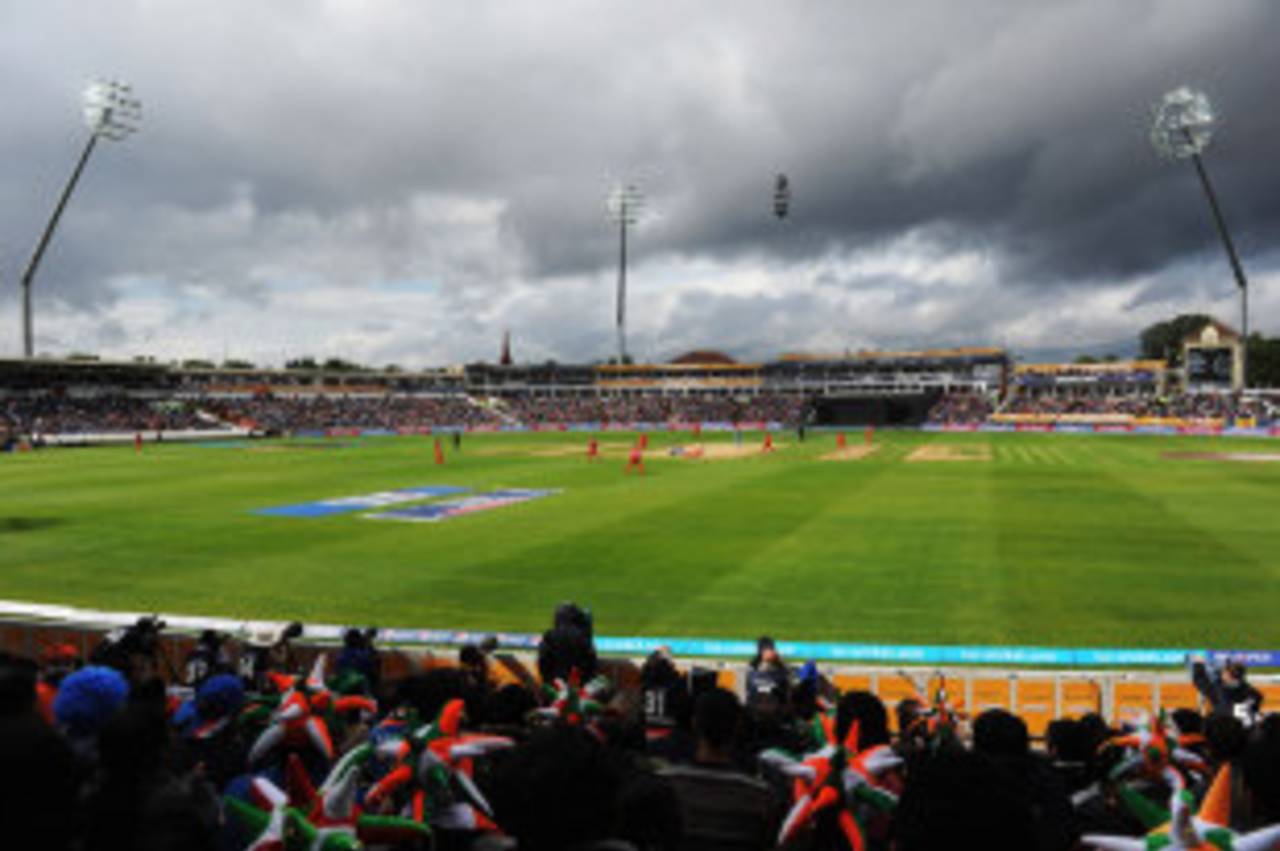Look beyond London, ECB
Test cricket should be taken to venues outside the south-east of England if it should inspire the next generation
Sam Blackledge, UK
03-Sep-2013

In 2014, Edgbaston will miss out on the main series for the second year running, despite being home to one of the highest populations of British Indians • Getty Images
There was a time in England when the old favourite grounds of Edgbaston, Lord's, Old Trafford, Trent Bridge, Headingley and The Oval held the monopoly on five-day matches every summer. Then in 2003 Chester-Le-Street, now unfortunately known as the Emirates Durham International Cricket Ground, broke the cycle by welcoming Zimbabwe. The visitors were bowled out for 94 in their first dig and lost by an innings and plenty. The Riverside embraced its big moment and a change appeared to be coming - Test cricket would surely now reach more far-flung parts of the country.
Over the last decade, there have indeed been matches played at Cardiff's Swalec Stadium, Hampshire's Rose (or Ageas) Bowl - and that's it. Bristol has hosted ODIs, but none of the other 13 main first-class grounds get a look-in.
When I was growing up, I saw a lot of cricket. I was lucky to live just down the road from Edgbaston, and my love for the game was fuelled by the all-conquering Warwickshire side of the mid-1990s. But the real thrill was Test cricket. My first Test was England v West Indies in 1991. I was six years old. On the third day, Patrick Patterson and Curtly Ambrose demolished a decent England batting line-up on their way to a seven-wicket win. Gooch, Atherton, Hick, Lamb, Ramprakash, Russell - all gone in the blink of an eye.
I squinted across at the blurry city-end scoreboard showing the not-out scores of Derek Pringle and Chris Lewis, the latest pair in a long line of contenders for the role of 'The New Botham'. I could never have known that I was in for another ten years of watching England lose in ever more inventive ways. But I knew Test cricket was for me.
Next summer, India will play Tests at Trent Bridge, Lord's, The Rose Bowl, Old Trafford and The Oval. That's three games in the south-east, two of which are in London, and just two in the rest of the UK. Edgbaston may yet be awarded a Sri Lanka Test earlier in the summer, but it misses out on the main series for the second year running, despite being home to one of the highest populations of British Indians.
Between 2010 and 2011, the pavilion end of the ground was completely redeveloped, bringing the capacity to 25,000. A handful of ODIs and a season of one man and his dog watching county cricket is in danger of wasting a top-class sporting venue.
I can make my peace with Edgbaston losing out. This season they were compensated with the pick of the Champions Trophy games and a sparkling T20 county finals day. Trent Bridge is not so far away, and I know several Brummies who gladly made the trip to Nottingham for this summer's Ashes and may do the same next year. But the south-east bias shows a disappointing lack of vision.
Every overseas cricketer dreams of playing at Lord's. Of course, a Test summer would not be complete without a visit to the home of cricket, and The Oval is always a fitting venue for the final Test of the summer. The ECB will perhaps argue London is the most densely populated area of the country and is easy to access. But adding Southampton means three of India's five Tests will be played within a 100-mile radius.
Not all county grounds are up to scratch, of course. In order to host a high-profile Test between two of the best sides in the world, you must be more than just a pitch and a pavilion. But Durham, formerly a forgotten northern outpost, is a prime example of what can be done with investment and support.
Not everyone can afford to travel to see Test cricket. From where I live in Cornwall, it's 200 miles to the nearest Test venue. Add in the spiralling cost of match tickets, and parents and children will drift away from the game, or decide not to explore it at all. The ECB must look beyond the capital and take a punt on some developing stadiums to inspire the next generation of English cricketers.
If you have a submission for Inbox, send it to us here, with "Inbox" in the subject line